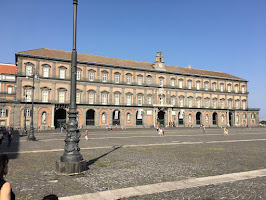Roman with many titles had powerful ancestors
 |
| Ludovico Chigi, pictured in his ceremonial uniform |
Chigi was the son of Imperial Prince Mario Chigi della Rovere-Albani and his wife, Princess Antoinette zu Sayn-Wittgenstein-Sayn. His father’s family, the Chigi, was one of the most prominent noble Roman families and they were descended from the rich and powerful banker, Agostino Chigi.
Another of their ancestors was Pope Alexander VII, who in the 17th century had conferred upon his nephew, Agostino Chigi, the hereditary princedoms of Farnese and Campagnano and the dukedoms of Ariccia and Formello. Chigi made his money in Siena but moved to Rome, taking his vast wealth with him, and he lent considerable sums of money to his uncle, the Pope.
For all the descendants of the Chigi male line, Pope Alexander VII had procured the title of Imperial Prince and Princess from the Holy Roman Emperor, Leopold I.
Agostino Chigi had also helped Pope Julius II financially and had been made treasury and notary of the Apostolic Camera. Julius II had authorised the Chigi family to augment their name and arms with his own, Della Rovere, and he had become their relative through lines of descent from his illegitimate daughter, Felice della Rovere.
Ludovico married Donna Anna Aldobrandini, the daughter of Pietro, Prince Aldobrandini, in 1893. They had two children, Prince Sigismondo and Princess Laura Maria Caterina.
In 1914, Ludovico succeeded his father and became eighth Prince of Farnese and Campagnano and inherited many other titles.
He was responsible for three papal conclaves and became an honorary member of the Pontifical Academy of Sciences.
 |
| Agostino Chigi, the banker who founded the Chigi dynasty |
The Sovereign Military Hospitaller Order of Saint John of Jerusalem of Rhodes and of Malta, to give it its full name, is a Roman Catholic organisation based in Rome with about 13,000 members worldwide.
It was founded in 1048 by merchants from Amalfi, who were in Jerusalem as a monastic order and ran a hospital to tend to Christian pilgrims in the Holy Land.
At the height of its power, the Order was also tasked by Rome with the additional military function of defending Christians from the local Muslim population.
The Knights of St. John were just one of the Christian military orders founded during this period.
When the Sultan of Egypt retook Jerusalem in 1291, the Knights of St. John went into exile, settling in Rhodes 20 years later. In 1523, they were forced from Rhodes by the Sultan’s forces and settled in Malta, which they ruled until they were dislodged by Napoleon’s army in 1798.
It is for that reason that the organisation began to be known as the Order of Malta or Knights of Malta.
After the defeat by the French, the Order then settled in Rome in the mid-19th century, where it remains to this day.
The Knights have had no military function since leaving Malta and have since sponsored medical missions in more than 120 countries. Under Ludovico’s leadership during World War II, the Order conducted hospital and charity work on a large scale.
In 1947, Ludovico was appointed president of an international committee to oversee the rebuilding of the Abbey of Monte Cassino.
Ludovico died in 1951 in Rome at the age of 85.
Travel tip:
Gian Lorenzo Bernini's Collegiata di Santa Maria
Assunta is a feature of the town of Ariccia
Ariccia, where Ludovico was born, is one of the Castelli Romani towns, situated in the Parco Regionale dei Castelli Romani. Some 25km (15.5 miles) from Rome, Ariccia has become famous for its porchetta, which is cooked slowly with wild fennel. The Sagra della Porchetta festival takes place every year during the first weekend of September, when the town celebrates with music, dancing, stalls and exhibitions. This festival began in 1950 and is one of the most traditional festivals in the Lazio region, which helps to promote porchetta to other parts of Italy and the world. As part of the Castelli Romani, the town is also known for its wine production. Ariccia's main church, the Collegiata di Santa Maria Assunta, completed in 1664, was designed by Gian Lorenzo Bernini.
Travel tip:.jpg)
The Chigi family's legacy in Rome includes the
Palazzo Chigi, the prime minister's official residence
The 16th-century Palazzo Chigi, which overlooks the Via del Corso in Rome, was completed by Carlo Maderno in 1580 for the Aldobrandini family. It was in the ownership of the Chigi family from 1659 until the 19th century. After a period as the residence of the Austro-Hungarian Ambassador to Italy, it was bought by the Italian state in 1916. It was used first as the residence of the Minister for Colonial Affairs and later the Minister of Foreign Affairs before, in 1961, becoming the official meeting place of the Council of Ministers, whose president is the head of the Italian government - the prime minister - and can now use the palace as his official residence.
Also on this day:
138: The death of the Roman emperor, Hadrian
1510: The death of Caterina Cornaro, Queen of Cyprus
1954: The death of Mafia chieftain Calogero Vizzini

.png)

